And How! features open and innovative formats for notices, articles and posts.
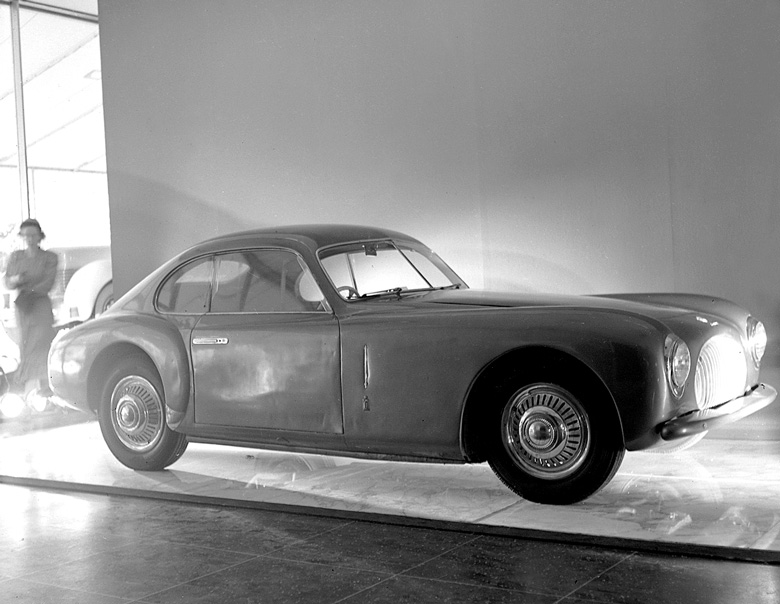
The Cisitalia number 042 at the MOMA exhibition in 1951. It had just come out of the body shop where “…most dents were removed before the body was sprayed a light metallic blue…”. We might submit that they missed a few here and there!
Could this really be the MOMA Cisitalia?
Story by Pete Vack
Photos by Jerry Lehrer
Over the years there has been a great deal of press concerning the “8 Automobiles” show at the Museum Of Modern Art held from August 29th to November 11, 1951 in New York. It was, after all, the “first exhibit anywhere of dealing with the aesthetics of automobile design.” The star of the show was the Cisitalia 202, and we have heard much about that as well. In fact, next week we’ll publish Gijsbert-Paul Berk’s chapter on the Fiat 1100, Dante Giacosa and the now-immortal Cisitalia so this is an opportune time to comment on the big show itself.
But, does anyone remember seeing what the fabled and famous Cisitalia looked like as it appeared at the automotive exhibition of the century? Fortunately, photographer Jerry Lehrer was there, and took these amazing and previously unpublished photos of the Cisitalia as it was being set up in the Museum of Modern Art.
When we first saw the photos, we couldn’t believe our eyes.
But in Volume 32-3 of Automobile Quarterly, Jonathan A. Stein told the story of the MOMA Cisitalia and published an interview with John Wheelock Freeman, who was involved in procuring cars for the exhibition. As a Cisitalia 202 was wanted for the exhibition and none could be found to lend, Freeman found one for sale in the Washington D.C. area, bought it, drove it to NY and sent it to a shop for a once over. The Cisitalia engine was tired so it was discarded and replaced with a standard Simca 1100. As Stein writes, “…most dents were removed before the body was sprayed a light metallic blue…” which was a bit of an understatement given what the Lehrer photos reveal. Ironically, the AQ article had no photos of the Cisi actually on display at MOMA.
And now it was ready for the exhibit that would never die.
After the exhibition was over Freeman sold the Cisi and it disappeared for several years until found and beautifully restored by Don Murphy of Maryland. It is believed to still reside with Murphy. The red Cisitalia that is in the Museum today was a gift from Pininfarina in 1972 and not the same car. Which is probably a good thing.
Or, perhaps there is more to these photos than meets the eye. It still seems a bit unbelievable that the car could have been shown in that condition. Plus, the original Museum brochure has clear images of the Cisitalia but if you look closely, the car in the “8 Automobiles” brochure is actually a different Cisitalia than the one in the Lehrer photos as presented here. Readers?
Also below, we publish the original Press Release from the Museum of Modern Art announcing and explaining the exhibit. For the full story about the MOMA Cisi, see Automobile Quarterly V32-3. Gijsbert’s opening Fiat 1100 chapter was published last week and can be seen here.
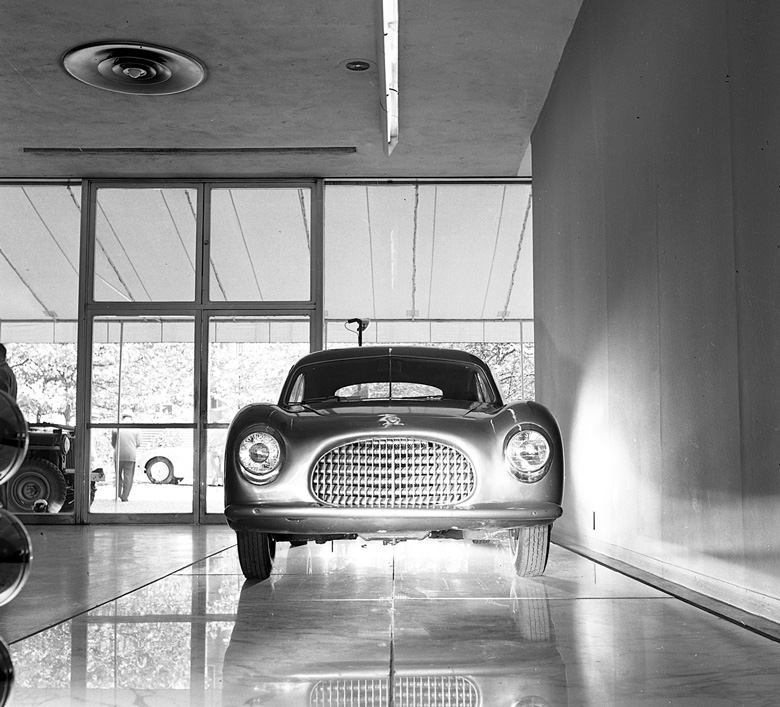
Front view was the best. Not the lighting, carefully arranged to deflect light from the defects in the paint and bodywork.
THE MUSEUM OF MODERN ART PRESS RELEASE
11 WEST 53 STREET, NEW YORK 19, N. Y.
FOR WEDNESDAY RELEASE
MUSEUM TO OPEN FIRST EXHIBITION ANYWHERE OF AUTOMOBILES SELECTED FOR DESIGN
Well-designed American and European automobiles will be displayed on an 8-foot-wide elevated roadway in the first floor galleries and the garden of the Museum of Modern Art, 11 West 53 Street, from August 29 through November 11 [1951] in the first exhibition anywhere dealing with the aesthetics of automobile design.
8 AUTOMOBILES, as the exhibition is entitled, will also include enlarged photographs of cars selected for their excellence as works of art and for their relevance to contemporary problems of passenger car design. The older cars, dating back 20 years, were chosen not to
show historical progression but to show prototypes of design still valid today. The exhibition was arranged by Philip C. Johnson, Director of the Department of Architecture and Design.
Three Basic Designs Illustrated
The 8 automobiles were selected as examples of three visually pleasing ways of combining the essential parts of a car: wheels, motor and passenger compartment. One approach, which is to combine the motor and passenger compartment in a box clearly separate from the wheels on which it rests is illustrated by the 1931 Mercedes SS and the Military Jeep. The Mercedes, designed and manufactured in Germany, was lent to the exhibition by D.Cameron Peck. This fast five passenger sport and touring car is designed on a heroic scale with each detail appropriately developed for the total effect.
The Army Jeep was manufactured by the Willys-Overland Motor Company and lent by the company to the exhibition. Besides being a beautiful tool for transportation, it has won approval for much more than its practicality: it is one of the very few genuine expressions of machine art.
As a variation on the design approach of a “box on wheels” the British MG and the 1939 Bentley are exhibited. The MG, a popular two-passenger sports car built by the Morris Car Company in England, was lent by the Sports and Utility Motors Company of White Plains. The MG glves the illusion of being the unenhanced piece of machinery which the Jeep actually is, but unlike the Jeep, its stylistic understatement is the result of careful attention to appearance itself. The tight, downward curve of the back is complemented by the long rising arabesque of the front fender. Both lines are related by a door the top of which is curved to form an elbow rest. As in the Mercedes, chromium plating is applied to individual parts of the machine which naturally lend themselves to this kind of decorative treatment, such as the radiator cap and frame of the folding windshield instead of as additions superimposed in the form of meaningless decorative strips.
The 1939 Bentley was lent by Briggs S. Cunningham. In this car each side of the “box” is clearly defined and limited by a sharp edge, which results in the Bentley’s characteristic swift and precise contour – the famous “razor edge.” The fenders are a modification of the body itself.
“Single Envelope” Design and “Separate Envelope” Design
A second approach to the design of automobiles is illustrated by the 1949 Cisitalia, a two-passenger competition model sports car designed by the well-known Italian designer Pinin Farina and manufactured in Italy. This car was lent to the exhibition by John Wheelock Freeman. Here the motor and passenger compartment as well as the wheels are all included in a single envelope, modeled by swellings and depressions. The envelope incorporates the elements which in the Mercedes, for example, are superimposed on the body.
A third way to combine the essential elements of a car is illustrated at its most extreme by the Talbot, a French three-passenger sport and touring car lent by Carroll Bagley. This car combines separate envelopes for each part In a composition of similar shapes, and, as a whole, forms an expressive symbol of streamlining.
Two other American cars in the exhibition besides the Jeep, the 1937 Cord, lent by Charles F. Hewitt and the I94I Lincoln Continental, lent by Bimel Kehm, are, like most cars, not as consistent in design. The Cord has pontoon fenders contrasting with a coffin-shaped hood, while the boxiness of the Lincoln Continental Is altered to include the front fenders and the hood in one molded piece.
Gallery of Enlarged Photographs
Enlarged photographs of 8 additional cars will be shown in an adjoining gallery. They include: the 1951 Muntz Jet, a massive American sports car; Raymond Loewy*s first postwar design for Studebaker Champion, shown as the most original postwar design; the pre-war Lincoln Zephyr, selected as the first successful streamlined car in America; and the 1951 Ford which is described as the “neatest of the deck and turret designs”. Photographs of two recent cars by Pinin Farina, leading automobile designer of today, will be shown in addition to his Cisitalia. They are the Maserati and the 1950 Bentley. Farina is now preparing body designs for fen American manufacturer. Two rear-engined cars, both designed in Germany by Dr. Porsche, will also be shown in photographs; the Volkswagen the blunt curves of which are the result of a new rational analysis of the problems of automobile design, and the Porsche, which illustrates the extreme development of the seemingly one-piece metal lid.
Illustrated Catalog Accompanies Exhibition
A 24-page illustrated catalog, to sell for 50 cents, accompanies the exhibition. In outlining the purpose of the exhibition, Mr. Johnson says: “An automobile is a familiar 20th-century artifact, and is no less worthy of being judged for its visual appeal than a building or a chair. Automobiles are hollow, rolling sculpture, and the refinements of their design are fascinating. We have selected cars whose details and basic design suggest that automobiles, besides being America’s most useful Useful Objects, could be a source of visual experience more enjoyable than they now are.”
Cars Exhibited on Special Roadway and under White Canvas Canopy The elevated roadway, on which the cars will be exhibited, extends from the first floor galleries into the Museum garden, where it is covered by a white canvas canopy. The Cisitalia will be shown on a marble paved strip at floor level; the roadway will be paved with white pebbles. Special lighting will illuminate the galleries and the garden.
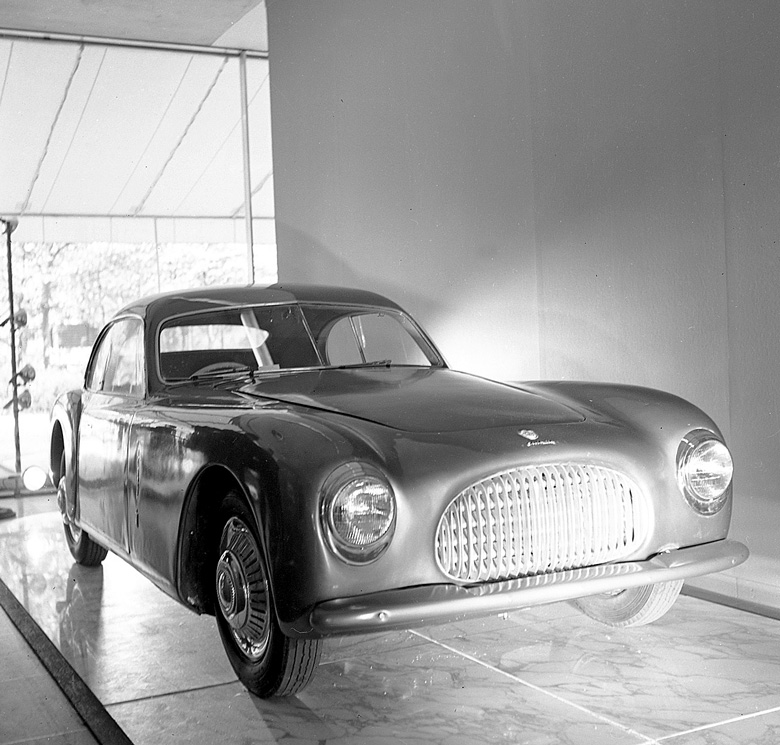
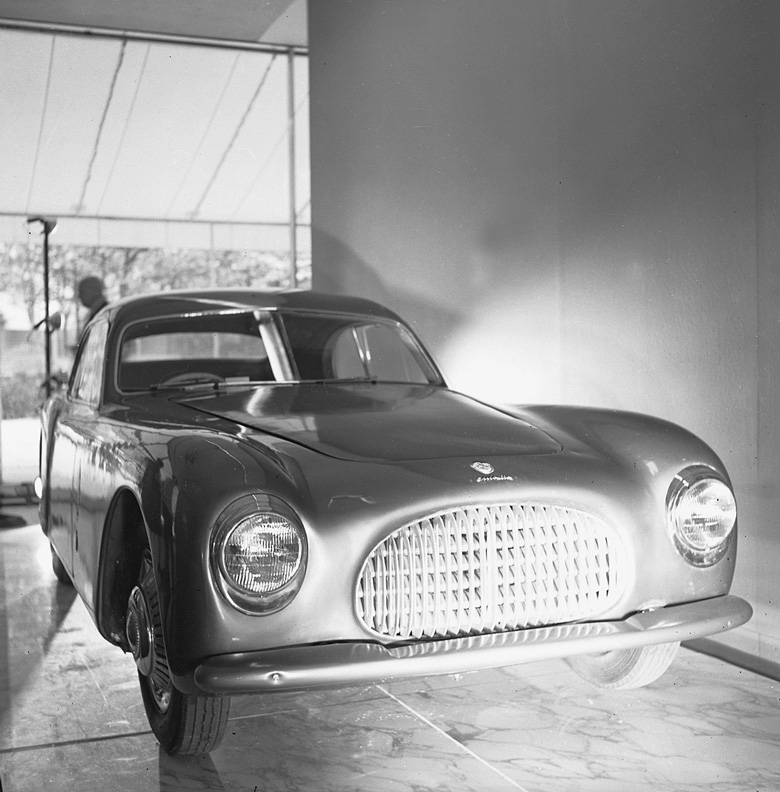
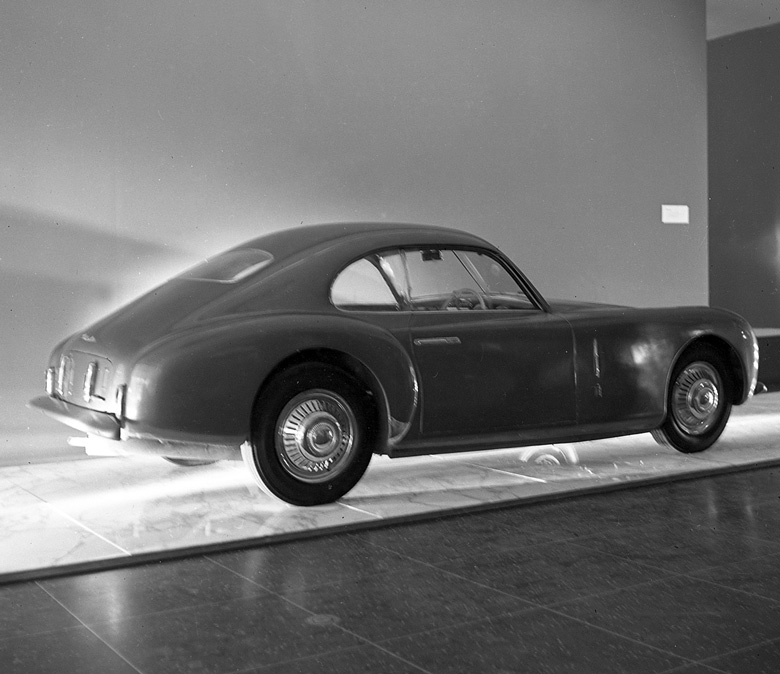
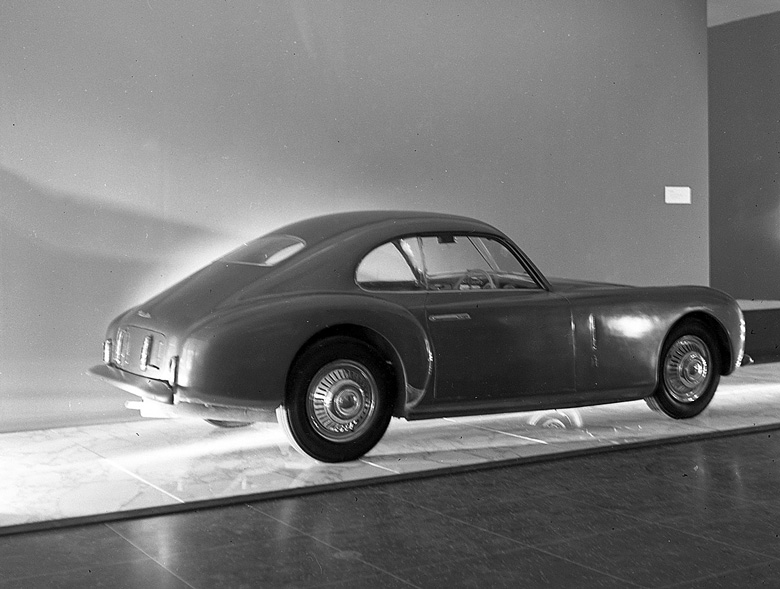
And what wonderful catalogue it was !
I kept mine in original envelope until
just recently, the design outstanding
when I went to MOMA in 1956 surprised to learn
they had another show– “10 automobiles” in 1953 and
cover of Catalogue was close up of the hubcap of
outstanding new Studebaker Starline coupe.
But that Cisitalia was real star
jim sitz
Cisitalia 202, a ground breaking design, we never had them in
California until 1952 when publisher Bob Petersen sent the late
Bill Pollack to Rhode Island to collect one from Russ Boss.
Bill, the advertising manager of “auto-Speed & Sport” recounted
his misadventure across America in that 1952 magazine story.
I had always felt the design at outstanding and so clean–Timeless
since seeing it in Road & Track 1948 parked next to Mr. Dusio’s
new Buick Roadmaster !
Jim Sitz
Wonderful story!
Can you reach Don Murphy with the dented door car in Maryland?
Thanks.
Richard G. Ballantine